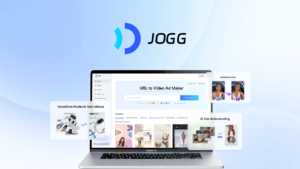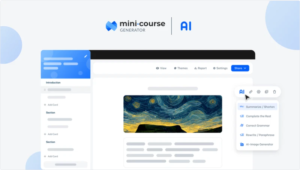Setting up automated email autoresponders can save time and improve communication. It’s a powerful tool for businesses and individuals alike.
Email autoresponders send automatic replies to incoming emails. They are useful for greeting new subscribers, confirming orders, or providing quick responses. Setting them up might seem tricky, but it’s easier than you think. In this guide, we’ll walk you through the steps.
You’ll learn how to create, customize, and manage your autoresponders. Whether you’re using them for customer support or marketing, automated emails can make your life simpler. Ready to dive in? Let’s get started and make your email communication more efficient!

Credit: www.youtube.com
Introduction To Email Autoresponders
Learn how to set up automated email autoresponders easily. Follow simple steps to schedule and send emails automatically. Enhance your communication with timely responses.
Email autoresponders are tools that send pre-written emails to your subscribers. These emails are triggered by specific actions or events. For example, when someone subscribes to your newsletter, an autoresponder can send a welcome email. This automation saves time and ensures prompt communication.
Importance Of Autoresponders
Autoresponders play a crucial role in email marketing. They help maintain consistent communication with your audience. This consistency builds trust and keeps your brand top of mind.
Autoresponders also allow you to respond instantly to subscribers’ actions. For instance, if someone makes a purchase, an autoresponder can send a thank-you email. This immediate response improves customer satisfaction.
Benefits Of Automation
Automation offers several benefits:
- Time-saving: Automating emails saves you hours of manual work.
- Consistency: Ensure every subscriber receives the same message.
- Personalization: Tailor messages based on user behavior.
- Scalability: Manage large email lists with ease.
| Benefit | Description |
|---|---|
| Time-saving | Automating emails saves hours of manual work. |
| Consistency | Ensures every subscriber receives the same message. |
| Personalization | Tailors messages based on user behavior. |
| Scalability | Manages large email lists with ease. |
Overall, email autoresponders are essential for efficient and effective email marketing.
“`
Choosing The Right Email Service Provider
Choosing the right email service provider is crucial for setting up automated email autoresponders. The right provider ensures your emails reach the inbox and help you connect with your audience. Let’s explore some top email service providers and the features you should look for.
Top Email Service Providers
- Mailchimp: Known for its user-friendly interface and robust analytics.
- Constant Contact: Offers excellent customer support and easy-to-use templates.
- AWeber: Provides a wide range of pre-built autoresponder templates.
- GetResponse: Features advanced automation tools and landing page builders.
- ConvertKit: Designed specifically for creators, with simple automation and tagging.
Features To Look For
When choosing an email service provider, consider the following features:
| Feature | Description |
|---|---|
| Automation Capabilities | Ensure the provider offers robust automation features. |
| Template Options | Look for a variety of customizable email templates. |
| Deliverability | Check the provider’s deliverability rates. |
| Analytics | Detailed analytics help track the success of your emails. |
| Customer Support | Reliable support can help resolve issues quickly. |
Choosing the right provider sets the foundation for effective email marketing. Evaluate the features carefully to find the best fit for your needs.
Setting Up Your Email List
Before sending automated emails, you need to set up your email list. This step is crucial for effective communication. You want to make sure your emails reach the right people. Having a well-organized email list helps in targeting the right audience. It also ensures that your messages do not end up in spam folders.
Importing Contacts
First, gather your contacts. You may already have a list in a spreadsheet. Import this list into your email marketing platform. Most platforms allow easy import from a CSV or Excel file. Ensure all email addresses are valid. Clean your list to remove any duplicates or errors. This step is key for maintaining a high deliverability rate.
Segmentation Strategies
Next, segment your email list. Segmentation means dividing your contacts into smaller groups. Each group should share common traits. For example, you can segment by location, purchase history, or engagement level. Segmented lists help you send more relevant content. This increases open rates and engagement.
To start, identify the main criteria for segmentation. Create segments based on these criteria. Use your email marketing platform to set up these segments. Regularly update your segments as your list grows. This keeps your email campaigns effective and targeted.
Creating Effective Email Templates
Creating effective email templates is crucial for successful automated email autoresponders. Well-crafted templates can boost engagement and enhance your brand image. This section will guide you through design tips and writing engaging content.
Design Tips
Design is key for email templates. First, keep your layout simple. A clean design makes your emails easy to read. Use a single-column layout. It works well on all devices. Consistent colors and fonts are important too. They should match your brand.
Next, include your logo at the top. This helps with brand recognition. Use high-quality images. They should be relevant to your content. But don’t overdo it. Too many images can slow down loading times. Add a clear call-to-action (CTA) button. It should stand out and be easy to click. Make sure your design is mobile-friendly. Many people read emails on their phones.
Writing Engaging Content
Writing engaging content is essential. Start with a strong subject line. It should grab attention. Keep it short and to the point. Personalize your emails. Use the recipient’s name. This makes the email feel more personal.
Write in a friendly tone. Imagine you are talking to a friend. Keep your sentences short and clear. Break up text with subheadings and bullet points. This makes it easier to read. Focus on the benefits for the reader. What value will they get from your email? End with a clear call-to-action. Tell the reader what you want them to do next.
Configuring Autoresponder Settings
Setting up automated email autoresponders can save time and improve engagement. Proper configuration is key. This process involves setting schedules, personalizing content, and testing settings. Let’s explore these steps in detail.
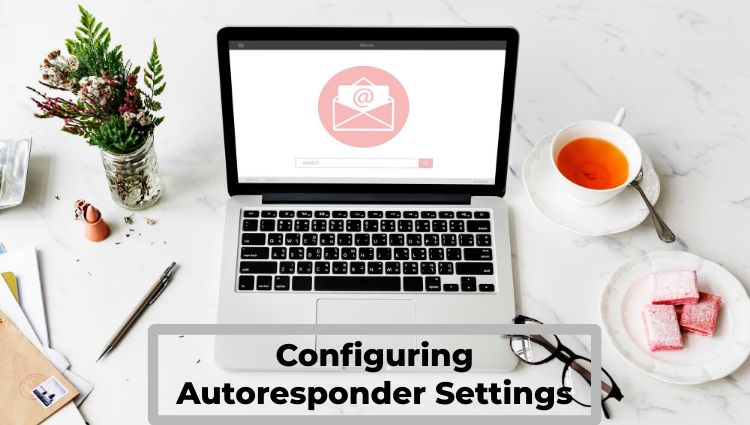
Scheduling Emails
Determine the best times to send emails. Consider your audience’s time zone. Use data to find the peak engagement times. For example, mornings or evenings might be ideal. Avoid sending too many emails in a short period. Space them out to avoid overwhelming recipients. Set specific intervals. Daily, weekly, or monthly options can work. Test different schedules to see what works best.
Personalization Techniques
Personalize your emails to make them more engaging. Use the recipient’s name in the subject line. Add personal touches based on their preferences. Segment your audience. Group them by interests or behaviors. Tailor content to each group. Use dynamic content. This changes based on the recipient’s data. For example, show different products based on past purchases. Personalization increases open rates and engagement.
Testing Your Autoresponders
Testing your autoresponders ensures they work properly before you send them out. Set up automated email responders by choosing an email platform and creating your message templates. Schedule the timing for each email to be sent automatically.
Setting up automated email autoresponders is only half the battle. Testing your autoresponders is crucial to ensure they perform as expected. This process helps identify areas for improvement. It also ensures your messages resonate with your audience. Effective testing can increase open rates and engagement.
A/b Testing Methods
A/B testing involves creating two versions of an email. Each version has a slight variation. This could be a different subject line or call-to-action. Send each version to a small segment of your audience. Monitor which version performs better. Use the winning version for the rest of your audience. This method helps optimize your emails.
Analyzing Test Results
Analyzing test results is vital for understanding what works. Look at open rates and click-through rates. These metrics show how your audience responds. If one version outperforms the other, focus on why. It could be the subject line, design, or content. Use these insights to refine your autoresponders. Continuous testing and analysis lead to better results.
“`
Monitoring And Adjusting Campaigns
Set up automated email autoresponders by monitoring and adjusting campaigns regularly. Ensure emails are relevant and timely. Optimize content based on user engagement.
Monitoring and adjusting your email autoresponder campaigns is crucial. It helps you understand what works and what doesn’t. Regularly checking your campaign’s performance ensures better results.
Tracking Metrics
To improve your campaigns, track specific metrics. Look at open rates and click-through rates. These metrics show how well your emails perform. Use tools like Google Analytics or your email marketing platform.
Examine the data regularly. Identify patterns and trends. This information helps make informed decisions.
Improving Open Rates
High open rates indicate successful campaigns. Start with an engaging subject line. A good subject line grabs attention. Keep it short and relevant. Personalize it when possible.
Segment your email list. Send targeted emails to specific groups. This increases the likelihood of recipients opening your emails.
Test different send times. Find the time your audience engages the most. Experiment and track the results.
Monitoring and adjusting campaigns is an ongoing process. Stay committed to improving your email performance.
“`
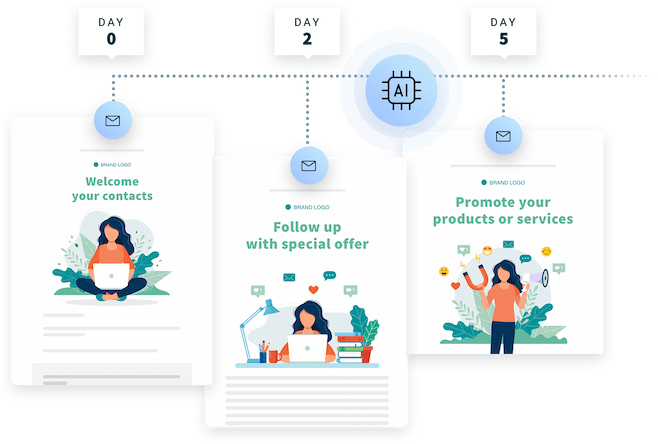
Credit: www.getresponse.com
Advanced Autoresponder Strategies
Setting up basic email autoresponders is a great start. But to maximize engagement, you need advanced strategies. These strategies can help you connect with your audience more effectively. Let’s dive into some advanced autoresponder techniques.
Drip Campaigns
A drip campaign sends a series of emails over time. This approach is ideal for nurturing leads. Each email builds on the previous one. Here’s how to set it up:
- Define your goal. Know what you want to achieve.
- Segment your audience. Group your contacts based on their interests.
- Plan your content. Create valuable and relevant emails.
- Set intervals. Decide the time gaps between emails.
- Monitor and adjust. Track the results and refine your strategy.
Behavioral Triggers
Behavioral triggers are actions taken by your contacts. These actions can trigger specific emails. This method makes your messages more relevant. Here are some examples:
- Abandoned cart emails. Send reminders if users leave items in their cart.
- Welcome emails. Greet new subscribers with a special message.
- Re-engagement emails. Reach out to inactive users with special offers.
Follow these steps to set up behavioral triggers:
- Identify key actions. Choose the behaviors that will trigger emails.
- Design your emails. Make sure they are personalized and engaging.
- Implement tracking. Use tools to track user actions.
- Automate the process. Set your email software to send emails based on triggers.
- Review performance. Analyze the effectiveness of your campaigns.
Common Mistakes To Avoid
Setting up automated email autoresponders can be a great tool for engagement. But there are some common mistakes to avoid. These mistakes can limit your success or harm your reputation. Here are some key areas to focus on.
Avoiding Spam Filters
One major issue is ending up in the spam folder. To avoid this:
- Use a reputable email service provider.
- Avoid using too many capital letters in your subject lines.
- Don’t overuse exclamation marks or spammy words like “Free” or “Buy Now”.
- Make sure your email content is relevant to your audience.
Following these tips can help keep your emails out of the spam folder.
Maintaining List Hygiene
List hygiene is crucial for successful email marketing. A clean list ensures higher open and click rates. Here’s how to maintain list hygiene:
- Remove inactive subscribers regularly.
- Validate email addresses to avoid sending to invalid emails.
- Encourage your users to update their preferences.
- Use a double opt-in method to confirm subscriptions.
Keeping your list clean will improve your email performance.

Conclusion And Best Practices
Setting up automated email autoresponders can transform your communication strategy. It saves time and ensures timely responses to your customers. Let’s wrap up with some best practices and key points to remember.
Summary Of Key Points
Firstly, define your goals. Knowing what you want to achieve helps tailor your messages. Secondly, segment your audience. Different groups need different messages. Thirdly, personalize your emails. Use names and relevant details to make your messages more engaging.
Fourth, always test your autoresponders. Check for errors and ensure everything works smoothly. Lastly, analyze the performance of your emails. Use data to improve and refine your strategy.
Future Trends In Email Marketing
Email marketing continues to evolve. One emerging trend is the use of AI in personalizing emails. AI can help create more relevant content for each subscriber. Another trend is interactive emails. These emails include elements like polls and surveys, making them more engaging.
Increased focus on mobile optimization is also crucial. More people read emails on their phones. Ensuring your emails look good on mobile devices is essential. Finally, privacy and data protection will remain important. Respecting user data builds trust and loyalty.
By following these practices, you can set up effective automated email autoresponders. Stay updated with future trends to keep your email marketing strategy relevant.
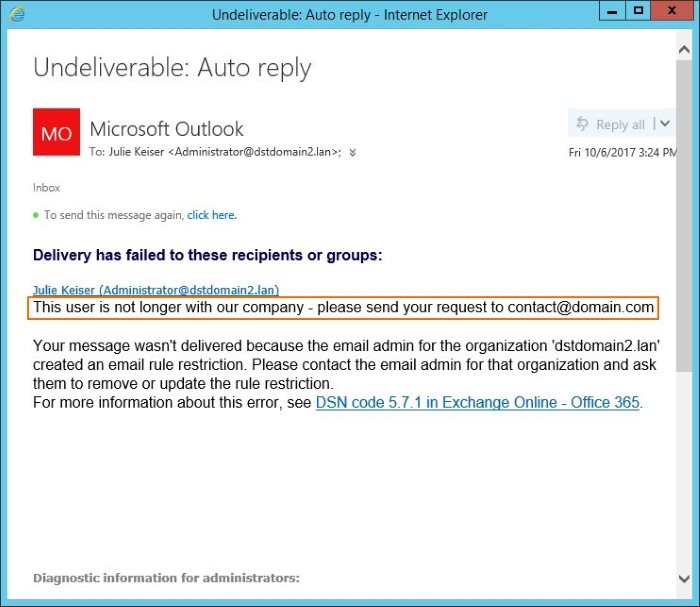
Credit: www.codetwo.com
Frequently Asked Questions
What Is An Email Autoresponder?
An email autoresponder is an automated system. It sends pre-written responses to emails. It is triggered by specific user actions.
Why Use Automated Email Autoresponders?
Automated email autoresponders save time. They ensure timely communication. They help in nurturing leads and improving customer engagement.
How Do I Set Up An Email Autoresponder?
Choose an email marketing platform. Create your automated email sequence. Set triggers for the autoresponder. Test thoroughly before launching.
Can Autoresponders Improve Customer Engagement?
Yes, autoresponders can improve customer engagement. They provide timely responses. They keep customers informed and interested.
Conclusion
Setting up automated email autoresponders is simple and beneficial. Follow the steps outlined. Start with a clear goal. Choose the right tools. Personalize your messages. Test and refine your emails. Engage your audience effectively. Save time and boost efficiency. Automated emails can transform your communication.
Keep learning and adjusting. Your efforts will pay off. Happy emailing!

